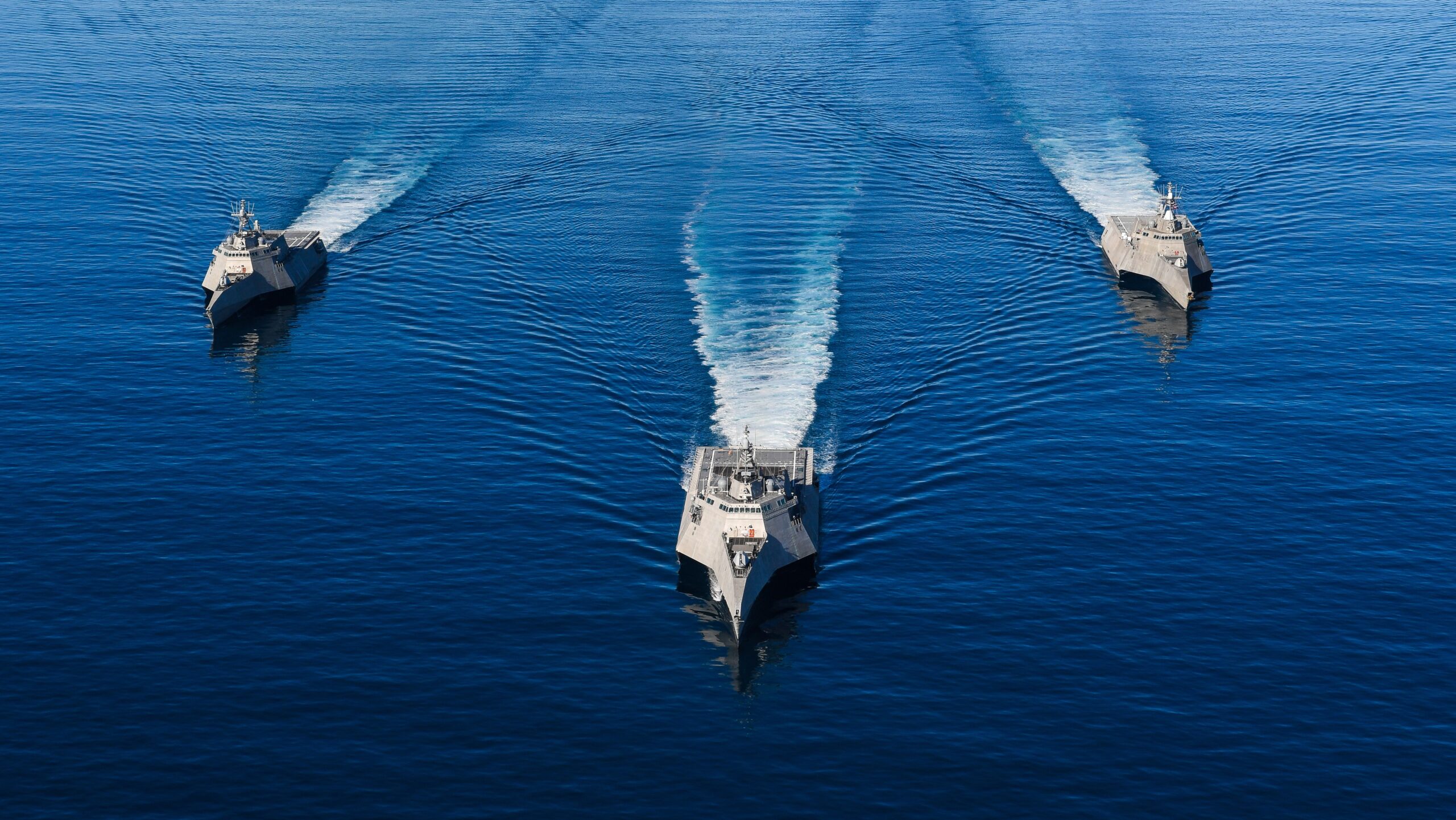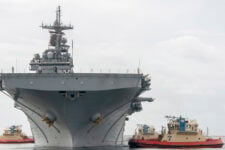
The Independence variant littoral combat ships USS Tulsa (LCS 16), left, USS Manchester (LCS 14), center, and USS Independence (LCS 2), right, sail in formation in the eastern Pacific. (US Navy/Shannon Renfroe)
WASHINGTON: The Littoral Combat Ship is one of a handful of poster children for Defense Department waste, a program that is both over budget and unable to deliver the capabilities that had been promised. So when the Pentagon’s fiscal 2023 budget request included plans to retire nine LCS vessels, there were not many willing to mourn the fleet.
But now one of the House Armed Services Committee’s most vocal naval supporters is putting a different spin on the story of the LCS: that while the ship will never be what it was designed to do, it is capable of a mission set the Navy needs right now.
“The LCS has not been a platform that has achieved its goal. We all know that,” Rep. Elaine Luria, D-Va., told Breaking Defense in an interview this week. “But it is a platform that can do low-end missions. So if you get rid of the LCS’s, what are you going to replace them [with]? Are you then going to need a DDG to go do every one of those ops, or are those ops not going to happen?”
Luria instead suggested keeping the LCS, but accepting they are what they are. Rather than served as the high-end backbone of the Navy of the future as once envisioned, the LCS could help free up other ships to do more critical operations while assisting in lower-tier requirements, such as drug interdiction, partnering with smaller navies in the Pacific island chains or operating out of Singapore.
The idea of using LCS for counter-drug or piracy operations is one that Sen. Angus King, I-Maine, has been hitting on for several years. Given that US Southern Command is always desperate for more ships, assigning the LCS to that mission could be a useful solution.
During the rollout of the Navy’s budget request, Rear Adm. John Gumbleton, the deputy assistant Navy secretary for budget, said the LCS retirements were mostly driven by Freedom-class vessels, as well as a decision to not pursue the anti-submarine warfare mission module package any longer.
The admiral also said the Navy expects to save $3.6 billion in future years by retiring 24 ships — a number Luria questions, saying “I just don’t buy” the figure as saving real money.
“When they say it’s going to be $3.6 billion over five years, do some rough math there, that’s about $700 million a year, that’s, like, 0.39 percent of their annual budget. So where’s all the money going?”
The reality is that even while members of Congress may be sick of thinking about the LCS, they are also enamored with the idea of a 355-ship navy. And while Navy leadership may be signaling a desire to get away from capacity in favor of investing in new capabilities, how many ships will actually be allowed to be retired is very much an open question — especially with members of Congress, on a bipartisan basis, stating during a budget hearing this week that they feel the Pentagon’s $773 billion request isn’t enough to keep up with inflation and threats from Russia and, especially China.
Luria fits into the camp that feels more money is needed, but declined to put a specific budget target on the field.
“I don’t have a specific dollar amount in mind. I would say that, for me to be satisfied, I need to see a significant increased commitment in shipbuilding,” Luria said. “I think we need to be building everything we can build with the industrial capacity we have.”
Among the ideas she floated were increasing the DDG buy from 10 to 15 and speeding up construction of the Navy’s new frigate design.






















